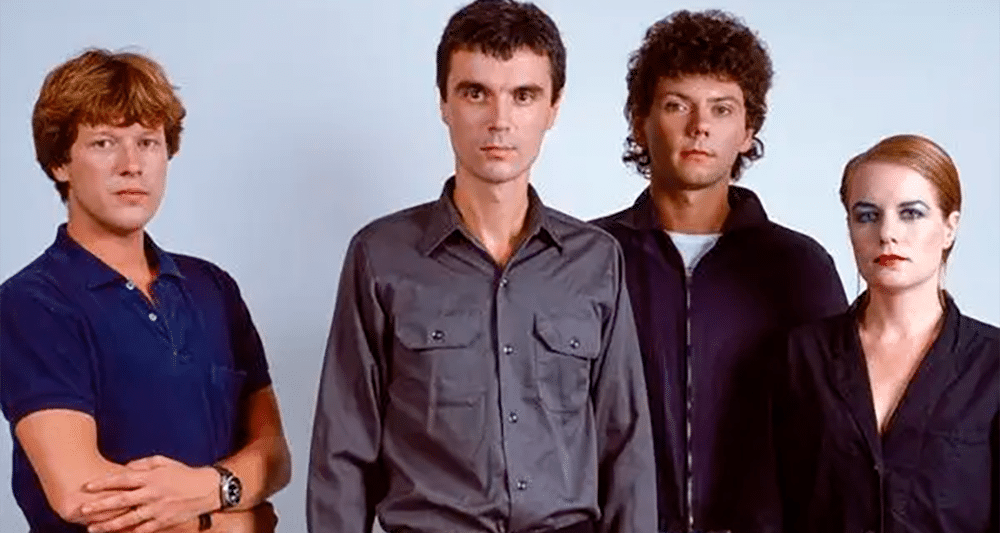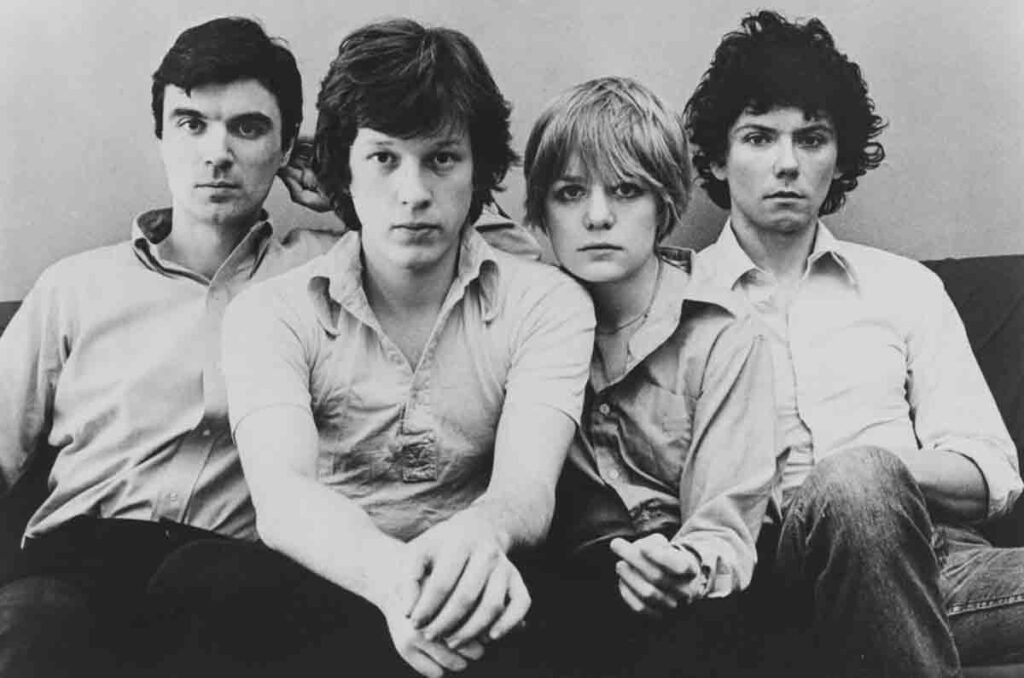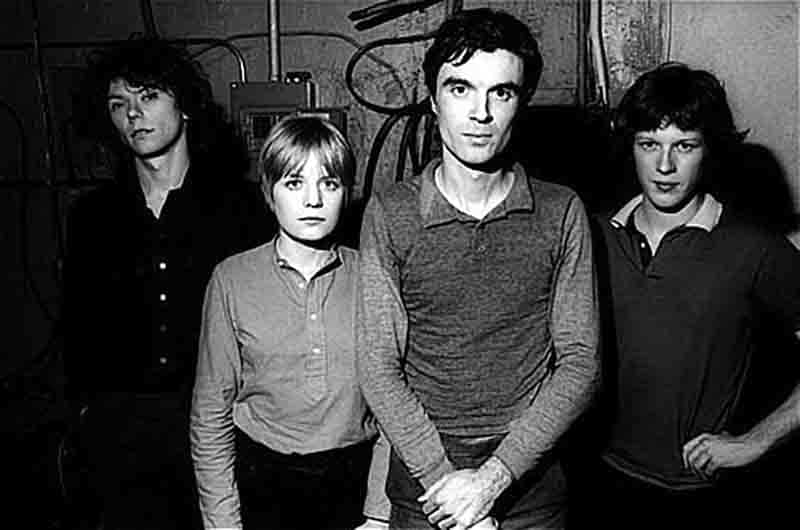The music of Talking Heads is full of nervous energy. Their mixture of funk, minimalism and polyrhythmic melodies of the world expresses the strangeness and anxiety of their time.
The beginning of the Talking Heads journey
David Byrne was born on May 14, 1952 in Dumbarton, Scotland. At the age of 2, his family moved to Canada. And then, in 1960, she finally settled in the suburbs of Baltimore, Maryland.
In September 1970, while studying at the Rhode Island School of Design, he met his future teammates Chris Frantz, Tina Weymouth. Shortly thereafter, they formed a musical group called The Artistics.

In 1974, three classmates move to New York and announce themselves as Talking Heads. The band's name, according to the frontman, was inspired by a sci-fi movie ad in TV Guide magazine. Their debut was on June 20, 1975 at the CBGB in the Bowery. The trio used the ironic sensibility of contemporary art and literature to subvert rock. And then their music is filled with dance rhythms.
Team formation
The breakthrough for the guys was very fast. They toured Europe with the Ramones and signed with the New York independent label Sire two years later. In February 1977 they released their first singles, "Love" and "Building On Fire". Talking Heads became one of the most creative and versatile representatives of the New Wave music wave of the 70s.
Byrne, Frantz, Weymouth and then Harvard graduate Jerry Harrison created a distinctive musical mix. She combined punk, rock, pop and world music into subtly delicate and elegant music. On the stage, where the rest tried to imagine a wild and outrageous style, they performed in a classic formal suit.
In 1977 their first album "Talking Heads 77" was released, containing the famous songs "Psycho Killer", "Byrnem". This was followed by More Songs About Buildings and Food (1978), which marked the premiere of the ensemble's four-year collaboration with Brian Eno. The latter is an experimenter playing with electronically altered sounds. He shared Talking Heads' growing interest in Arabic and African music.
The album also included a cover version of "Al Green Take Me to the River", which was the band's first single. The next album was called "Fear of Music" (1979), its structure was much more compressed and ominous in terms of sound.

Popularity Talking Heads
Their breakthrough album was Remain in Light (1980). Eno and Talking Heads improvised in the studio with separate recorded tracks. The music was heavily overdubbed with vocals with ceremonial music from Nigeria and disturbing, provocative tones in complex polyrhythms.
According to Rolling Stone magazine, this album is one of the most important in the history of the recording industry. It is a mixture of African musical communalism and Western technology. This is an atmospheric record that is amazing, literally alive and contains strong songs. It also includes today's classic, "Once in a Lifetime".
After the release of this album, Talking Heads went on a world tour with an expanded line-up. Keyboardist Bernie Worrell (Parliament-Funkadelic), guitarist Adrian Belew (Zappa/Bowie), bassist Busta Cherry Jones, percussionist Steven Scales, and black singers Nona Hendryx and Dollette McDonald were added.
Solo life of the members
This was followed by a period when members of Talking Heads realized their solo projects. Byrne began to experiment with electronics, performance and music from around the world. He also successfully wrote music for films and for the theater. He was awarded for his contributions to the soundtrack of the film Bernarda Bertolucciho «The Last Emperor (1987).
Harrison recorded his own album again «The Red and the Black". Frantz and Weymouth set to work with their own ensemble on "Tom Tom Club". The huge disco hit "Genius of Love" turned their entire album into platinum.
In 1983, a new serial album "Speaking in Tongues" was released. A limited edition of 50000 copies was sold with a cover designed by renowned abstract artist Robert Rauschenbergem. The subsequent edition was already in Byrne's "only" packaging.

This album rose to number one among all TH records. And the single "Burning Down the House", which received the highest number of points, was broadcast on MTV. This is followed by a tour with an expanded line-up, including guitarist Alexe Weira (Brothers Johnson). It is captured in the concert film directed by Jonathan Demme Stop Thinking.
Sunset Talking Heads
The following year, Talking Heads returned to their four-piece line-up and simpler song forms. In 1985 they released the album "Little Creatures" and in 1988 "Naked", produced in Paris by Steven Lillywhitem (Simple Minds et al.). It included guest performances by African and Caribbean musicians living in France.
In the early 90s, there were rumors about the breakup of Talking Heads. David Byrne told the Los Angeles Times in December 1991 that the band was ending. In January 1992, the other three members of the band issued a statement expressing their disappointment with Byrne's announcement. The last four albums, recorded together and then new ones, have been added to the Favorites retrospective CD box.
Talking Heads have evolved from garrulous art-rockers to nervous reinterpreters of funk, disco and afrobeat in the New Wave epics of the 80s. Their ability to soak up so many influences outside of the narrow punk repertoire made them one of the best live bands of the decade. And Frantz and Weymouth are some of the most formidable rhythm sections in modern rock.
At the beginning of their career, Talking Heads was full of nervous energy, detached emotions and understated minimalism. When they released their last album 12 years later, the band recorded everything from art funk to polyrhythmic world explorations to simple melodic guitar pop.
Between their first album in 1977 and their last in 1988, they became one of the most critically acclaimed bands of the 80s. The guys even managed to make a few pop hits. Some of their music may seem too experimental, smart and intellectual. But in any case, Talking Heads represent all the good things about punk.



